Jaguar I-Pace vs Renault Clio – Differences & prices compared
Compare performance, boot space, consumption and price in one view.
Find out now: which car is the better choice for you – Jaguar I-Pace or Renault Clio?
The Jaguar I-Pace (SUV) comes with a Electric engine and Automatic transmission. In comparison, the Renault Clio (Hatchback) features a Full Hybrid, Petrol or LPG engine with Automatic or Manuel transmission.
When it comes to boot capacity, the Jaguar I-Pace offers 638 L, while the Renault Clio provides 391 L – depending on how much space you need. If you’re looking for more power, decide whether the 400 HP of the Jaguar I-Pace or the 143 HP of the Renault Clio suits your needs better.
In terms of consumption, the values are 25.20 kWh per 100 km for the Jaguar I-Pace, and 4.30 L for the Renault Clio.
Price-wise, the Jaguar I-Pace starts at 79200 £, while the Renault Clio is available from 16600 £. Compare all the details and find out which model fits your lifestyle best!
Jaguar I-Pace
The Jaguar I-Pace represents a remarkable fusion of cutting-edge electric performance and iconic British luxury. With its sleek design and spacious interior, this model redefines what one can expect from an electric vehicle in terms of style and comfort. Its impressive driving dynamics and advanced technology make it a standout choice for those looking to make a statement on the road.
details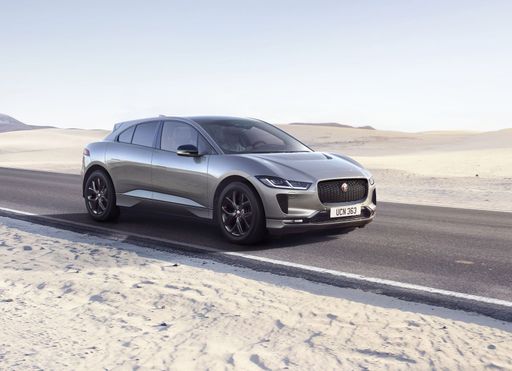 @ media.jaguar.com
@ media.jaguar.com
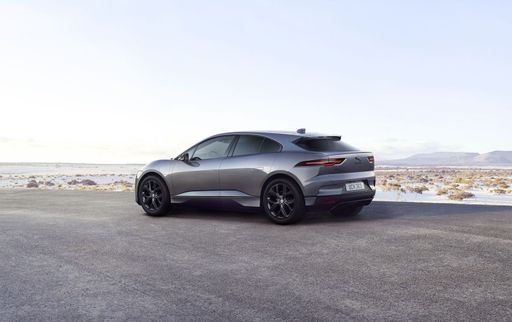 @ media.jaguar.com
@ media.jaguar.com
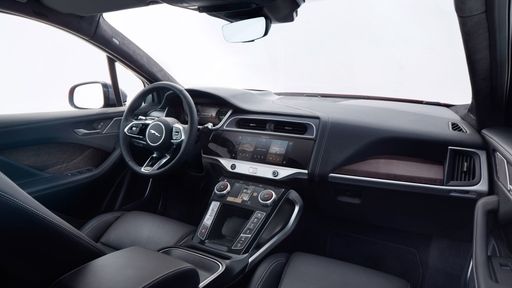 @ media.jaguar.com
@ media.jaguar.com
Renault Clio
The Renault Clio continues to impress with its sleek design and agile handling, making it a standout choice in the compact car segment. Inside, it offers a surprisingly spacious and comfortable cabin, crafted with high-quality materials that enhance the driving experience. Its fuel efficiency and reliable performance make it an attractive option for both city commuting and longer journeys.
details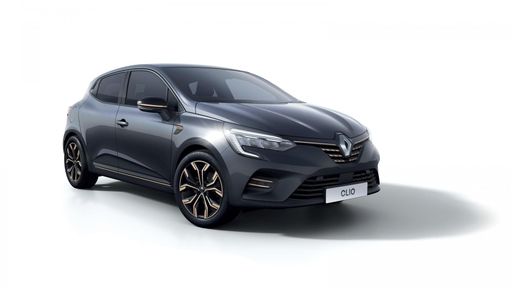 @ renault-presse.de
@ renault-presse.de
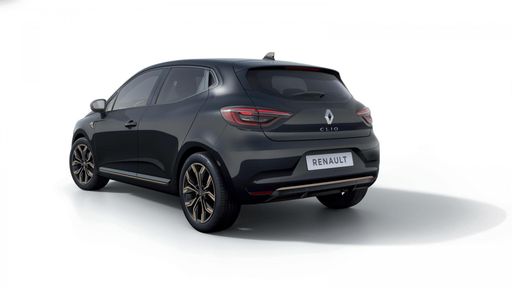 @ renault-presse.de
@ renault-presse.de
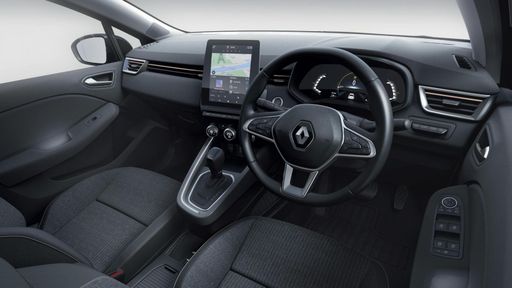 @ renault-presse.de
@ renault-presse.de

|

|
|
|
|
Costs and Consumption |
|
|---|---|
|
Price
79200 - 85500 £
|
Price
16600 - 23000 £
|
|
Consumption L/100km
-
|
Consumption L/100km
4.3 - 7 L
|
|
Consumption kWh/100km
25.20 kWh
|
Consumption kWh/100km
-
|
|
Electric Range
469 km
|
Electric Range
-
|
|
Battery Capacity
84.70 kWh
|
Battery Capacity
0.60 kWh
|
|
co2
0 g/km
|
co2
97 - 122 g/km
|
|
Fuel tank capacity
-
|
Fuel tank capacity
32 - 42 L
|
Dimensions and Body |
|
|---|---|
|
Body Type
SUV
|
Body Type
Hatchback
|
|
Seats
5
|
Seats
5
|
|
Doors
5
|
Doors
5
|
|
Curb weight
2226 kg
|
Curb weight
1124 - 1331 kg
|
|
Trunk capacity
638 L
|
Trunk capacity
301 - 391 L
|
|
Length
4682 mm
|
Length
4053 mm
|
|
Width
2011 mm
|
Width
1798 mm
|
|
Height
1566 mm
|
Height
1440 mm
|
|
Payload
444 kg
|
Payload
398 - 406 kg
|
Engine and Performance |
|
|---|---|
|
Engine Type
Electric
|
Engine Type
Full Hybrid, Petrol, LPG
|
|
Transmission
Automatic
|
Transmission
Automatic, Manuel
|
|
Transmission Detail
Reduction Gearbox
|
Transmission Detail
Automatic Gearbox, Manual Gearbox
|
|
Drive Type
All-Wheel Drive
|
Drive Type
Front-Wheel Drive
|
|
Power HP
400 HP
|
Power HP
67 - 143 HP
|
|
Acceleration 0-100km/h
4.80 s
|
Acceleration 0-100km/h
9.3 - 17.1 s
|
|
Max Speed
200 km/h
|
Max Speed
160 - 174 km/h
|
|
Torque
696 Nm
|
Torque
95 - 205 Nm
|
|
Number of Cylinders
-
|
Number of Cylinders
3 - 4
|
|
Power kW
294 kW
|
Power kW
49 - 105 kW
|
|
Engine capacity
-
|
Engine capacity
999 - 1598 cm3
|
General |
|
|---|---|
|
Model Year
2023
|
Model Year
2023 - 2025
|
|
CO2 Efficiency Class
A
|
CO2 Efficiency Class
C, D
|
|
Brand
Jaguar
|
Brand
Renault
|
Jaguar I-Pace
Discovering Innovation: The Jaguar I-Pace
The Jaguar I-Pace represents a bold leap into the future of automotive design and engineering, blending luxury, performance, and sustainability into one stunning package. As Jaguar’s first all-electric model, the I-Pace not only showcases their commitment to innovation but also sets a new standard in the electric vehicle market.
A Powerhouse on Wheels
Under the sleek body of the Jaguar I-Pace lies an electric motor capable of delivering an impressive 400 PS (294 kW). This translates into an exhilarating driving experience, with the I-Pace accelerating from 0 to 100 km/h in just 4.8 seconds. The instant torque provided by the motor ensures unparalleled responsiveness, making every drive thrilling.
Efficient Performance
Despite its powerful performance, the Jaguar I-Pace is equally impressive in terms of efficiency. Boasting a consumption rate of just 25.2 kWh per 100 km and an electric range of up to 469 km, it’s clear that Jaguar has engineered this model to deliver uncompromised efficiency. With a noteworthy CO2 emission of 0 g/km, the I-Pace stands as a testament to the possibilities of sustainable luxury vehicles.
Advanced Engineering and All-Wheel Drive
The Jaguar I-Pace features an all-wheel-drive system, offering superior handling and stability, crucial for a vehicle with such performance credentials. The combination of dual electric motors and a sophisticated reduction gearbox enhances its prowess on the road, ensuring a smooth and responsive drive regardless of terrain.
A Design to Impress
One look at the Jaguar I-Pace, and its embodiment of modern elegance is unmistakable. With dimensions of 4682 mm in length, 2011 mm in width, and 1566 mm in height, this SUV is both spacious and stylish. The interior is equally inviting, with premium materials and high-tech features offering a luxurious driving experience for up to five passengers.
Technological Marvel
The I-Pace is packed with cutting-edge technology, from its intuitive infotainment system to its advanced safety features. The vehicle's aerodynamic design not only enhances its aesthetic appeal but also contributes to its efficiency and range, making it a marvel of modern engineering.
Sustainability Without Compromise
Jaguar positions the I-Pace as a trailblazer in eco-friendly driving, earning an A-class CO2 efficiency rating. It underscores a commitment to sustainability without compromising the luxury and performance that aficionados have come to expect from the Jaguar brand.
Conclusion
The Jaguar I-Pace is more than just an electric vehicle; it represents a future where performance, luxury, and sustainability coexist seamlessly. With its groundbreaking design and technology, the I-Pace not only captures the essence of Jaguar's rich heritage but also paves the way for the brand's journey into the electric era.
Renault Clio
Introduction to the Renault Clio
The Renault Clio, a popular choice among compact cars, has continually advanced its design and technology to maintain a strong position in the automotive market. With enhancements in engineering, efficiency, and aesthetic appeal, the Clio remains a top contender in the hatchback category.
Advanced Hybrid Technology
The Renault Clio's hybrid technology is one of its standout features. The E-Tech Hybrid system optimises both performance and efficiency, offering a seamless transition between electric and fuel-powered driving. This setup results in an impressive fuel consumption rate of 4.3 L/100km, making it an attractive option for eco-conscious drivers.
Efficient Engine Options
Renault offers a variety of engine choices for the Clio, accommodating different driving styles and preferences. From the economical SCe 65 manual variant to the powerful TCe 100 LPG gas version, each option is engineered to balance performance with fuel efficiency. With outputs ranging from 67 to 143 PS, drivers can enjoy a tailored driving experience.
Design and Comfort
The Renault Clio stands out with its sleek and modern design, characterized by its hatchback body style. The interior boasts an ergonomic layout with seating for five, ensuring passenger comfort and convenience. With a boot capacity of 301 to 391 litres, the Clio also offers practical storage solutions for everyday use.
Safety and Innovation
Safety is a key priority for Renault, and the Clio reflects this commitment with its suite of innovative safety features. Advanced driver-assistance systems are integrated throughout, enhancing both safety and usability. The Clio encompasses features like lane departure warning, automatic emergency braking, and adaptive cruise control.
Cost Efficiency and Environmental Impact
The Renault Clio not only offers affordability with pricing ranging from €18,450 to €26,800, but also promises low running costs. With CO2 emissions between 97 and 130 g/km, the Clio fits well within the C and D efficiency classes. This makes it a cost-effective and environmentally friendly choice for modern drivers.
Conclusion
Renault Clio remains a dynamic, dependable and economical option in the compact car segment. With its innovative technologies, diverse engine options, and commitment to safety and design, the Clio continues to impress and adapt to the evolving demands of the automotive world.
The prices and data displayed are estimates based on German list prices and may vary by country. This information is not legally binding.
